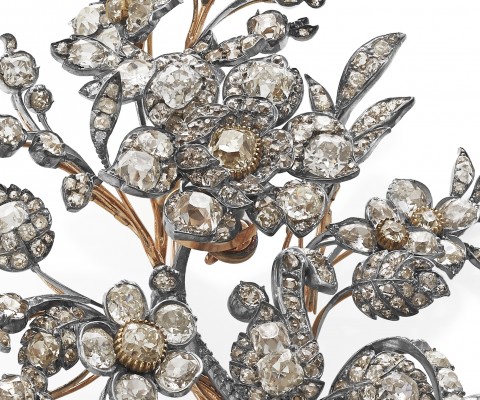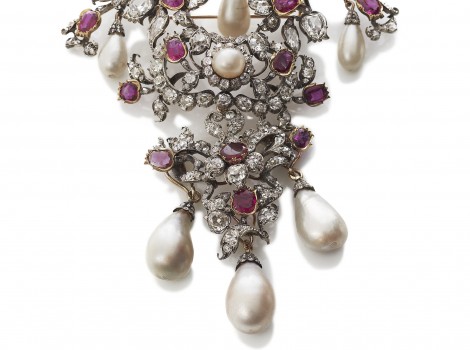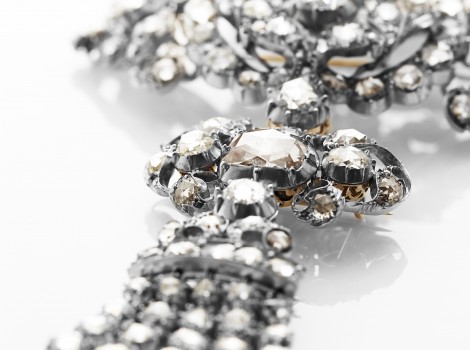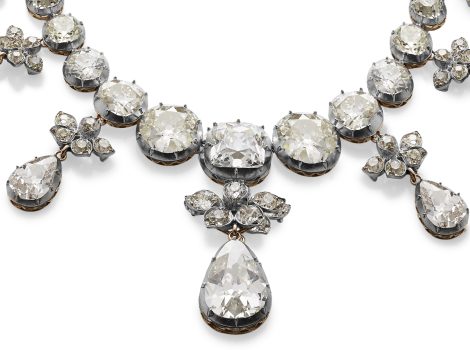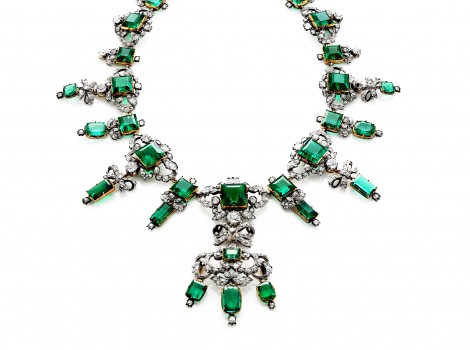The Crown Jewels
The crown jewels
The Danish crown jewels are the result of the interest that generations of queens have taken in jewellery and precious stones. The story begins with a grieving widow.
The Danish crown jewels are living cultural heritage. Worn for generations by Danish queens, continually adapted to changing fashions and still in use to this day. They are the only crown jewels in the world that are both on display as museum exhibits – here at Rosenborg – and are also worn by the incumbent queen.
The collection was first established in 1746
The history of the crown jewels begins with Christian VI’s queen, Sophie Magdalene (1700–1770). When she was widowed in 1746, she expected that she would soon die of grief. She therefore wrote her last will and testament, in which she specified that her jewellery should not be given to a specific individual but should always be ‘with the crown’ to ensure that the members of the royal house would always have access to magnificent jewellery. In more recent times, the crown jewels have been at the exclusive disposal of the incumbent queen. Most of Queen Sophie Magdalene’s original pieces have been altered over time to keep up with changing fashions in jewellery design.
Redesigned during the 1840s
Today, four jewellery sets designated as crown jewels are kept at Rosenborg. The four sets – the emerald set, the pearl-ruby set, the brilliant set and the rose-cut diamond set – were all created in their current form at the initiative of Christian VIII’s consort, Queen Caroline Amalie (1796–1881) by the jewellery firm C.M. Weishaupt & Söhne of Hanau in Hesse, Germany, between 1840 and 1842. She had the collection of precious stones arranged into four new sets in accordance with the fashion that had become – and still remains – the norm for large jewellery sets since the reign of Emperor Napoleon around 1800.
Additional jewellery is included in the collection
Throughout history, some queens wore the crown jewels often, others hardly at all. Frederik VIII’s queen, Lovisa (1851–1926) took a great interest in the crown jewels. In 1910, she redefined which pieces are included in the collection. She also commissioned a travel case with three drawers to make it easier to move the collection when needed. In an expansion of the collection, Queen Lovisa added jewellery that had belonged to her predecessor, Queen Louise (1817–1898), and also had several new pieces made from loose pearls and precious stones from the collection at Rosenborg. Today, the jewellery added by Queen Lovisa is on display at the Amalienborg Museum.
Still in use today
According to custom, the crown jewels cannot leave the country and are only worn by the incumbent queen. During the reign of HM Queen Margrethe, the crown jewels were typically worn a few times a year. For example, HM Queen Margrethe would often wear crown jewels for the New Year’s Levees or in connection with state visits or other big events that called for full formal dress. In connection with the then Crown Prince Couple’s wedding in May 2004, no fewer than three sets were in use, as HM Queen Margrethe wore the pearl-ruby set, the emerald set and the brilliant set over the course of the celebrations.
After the recent succession of the throne, on 14 January 2024, the Danish crown jewels are now at the disposal of HM Queen Mary.

 Dansk
Dansk
 English
English
 Deutsch
Deutsch

